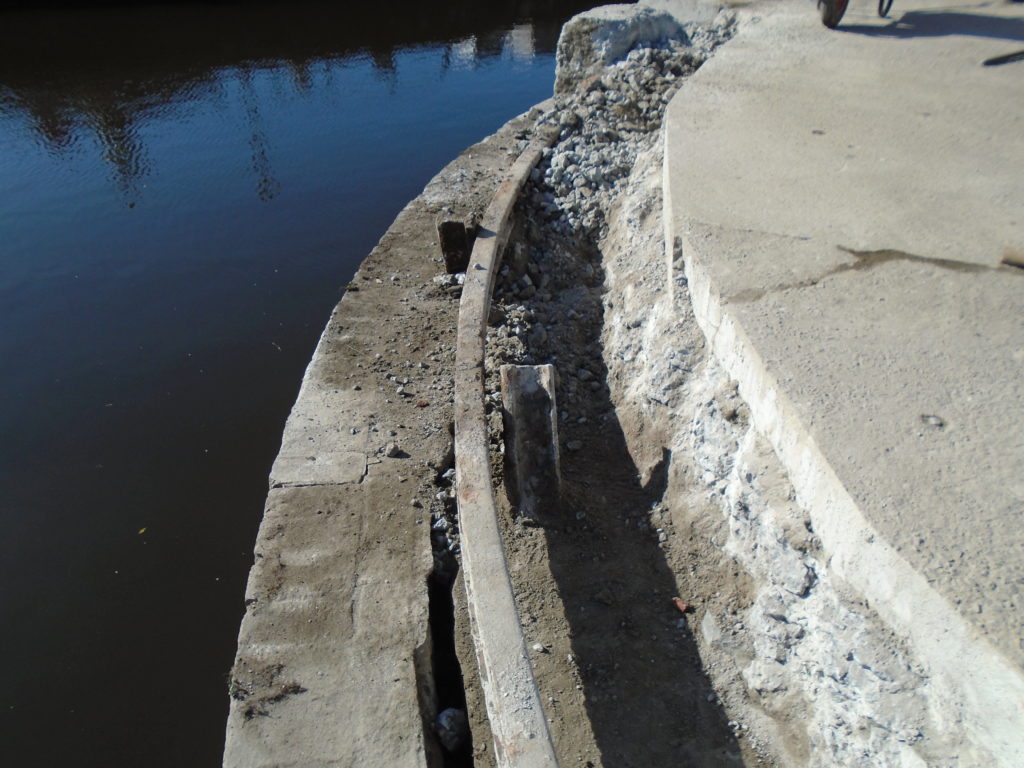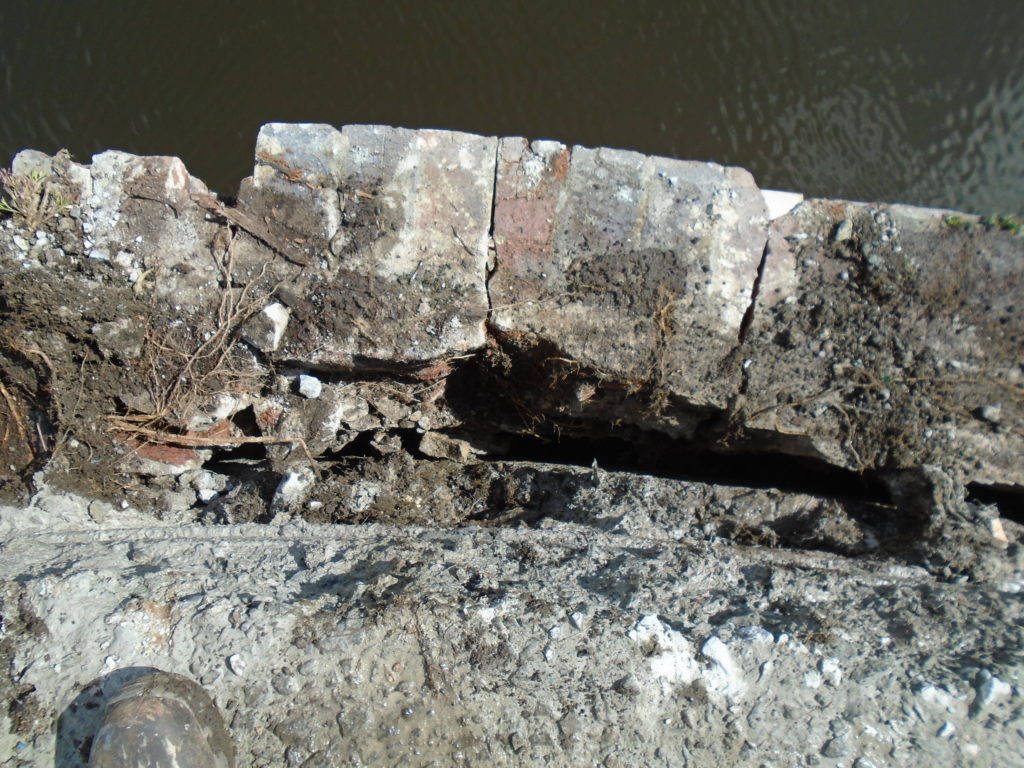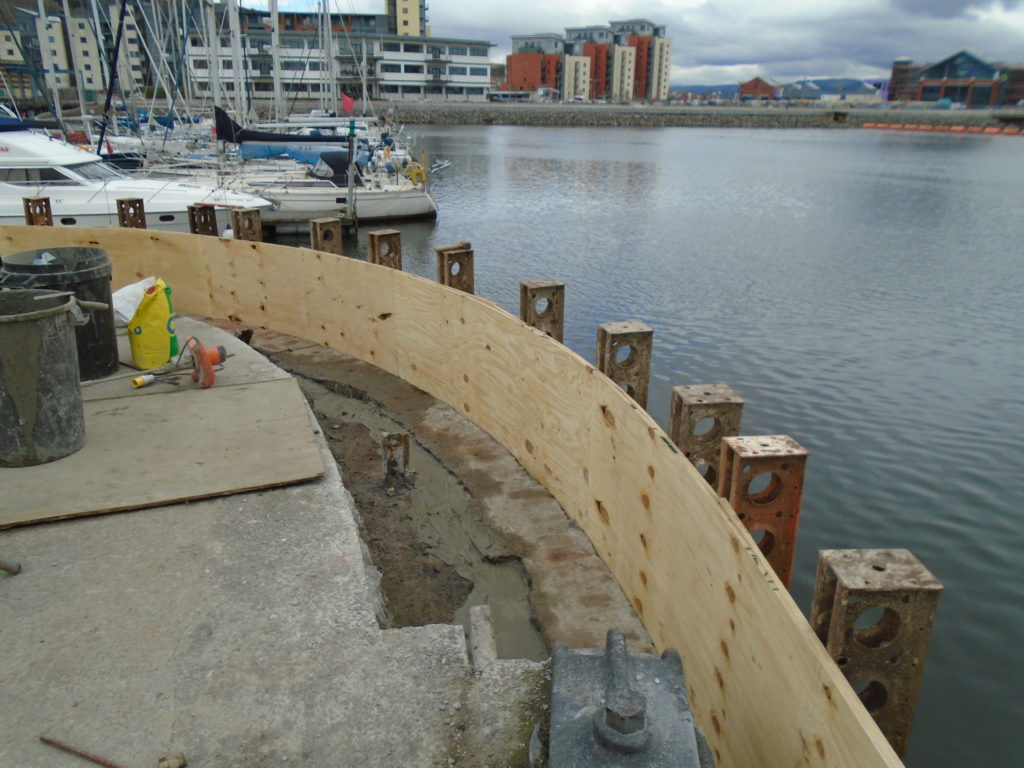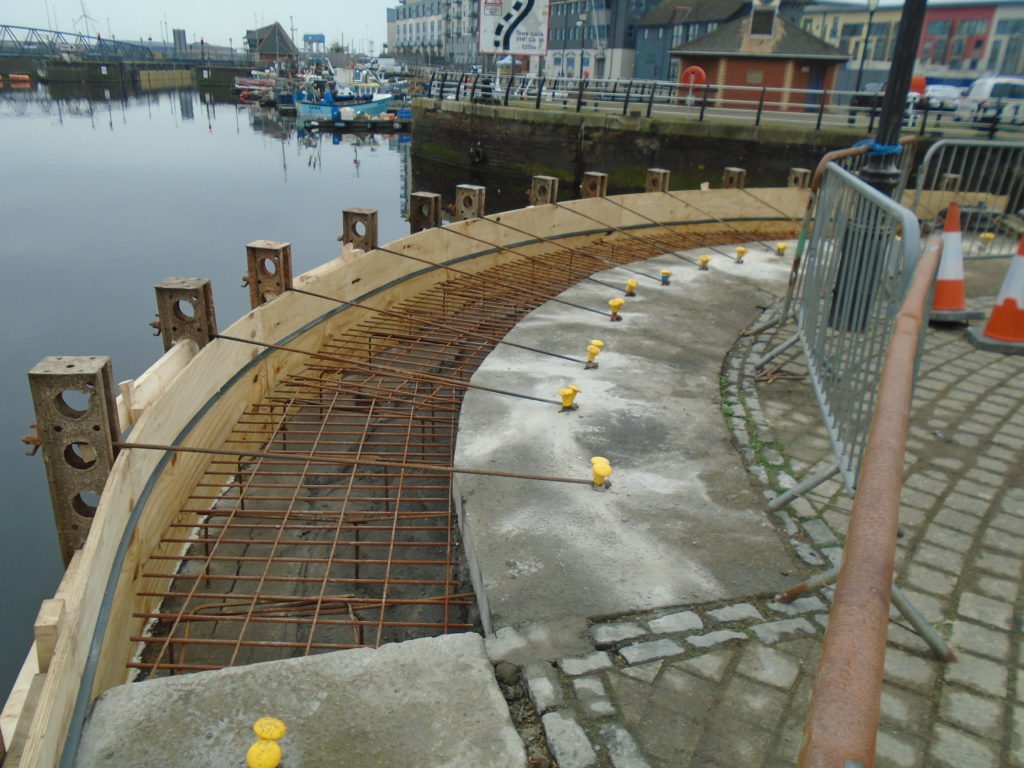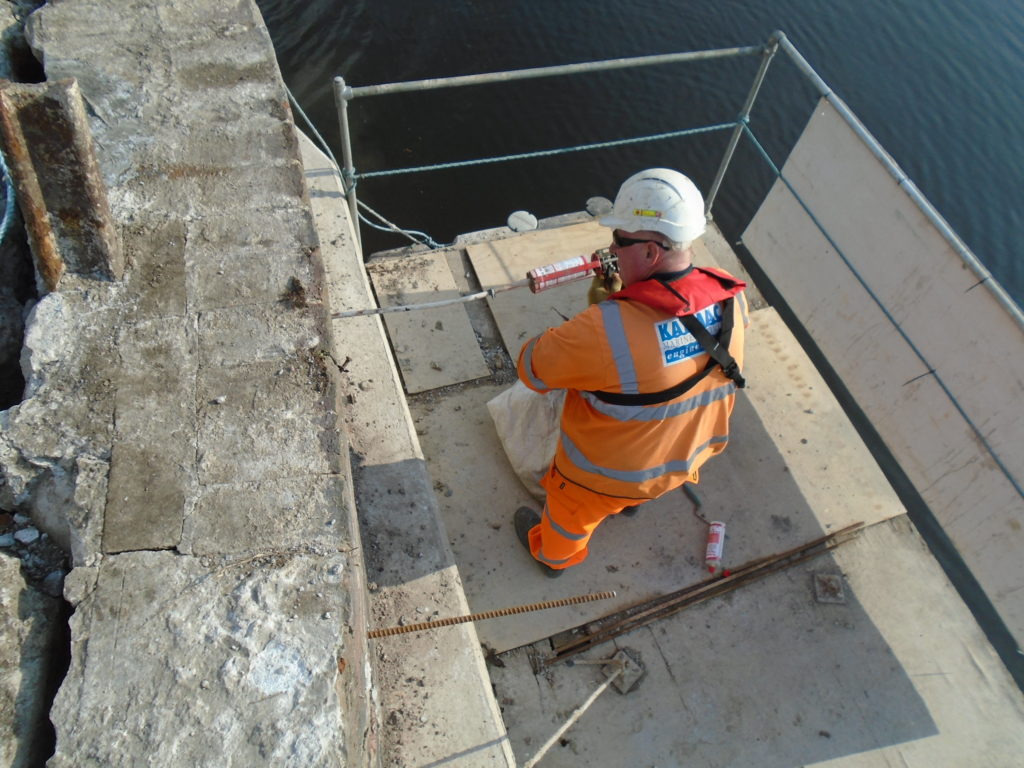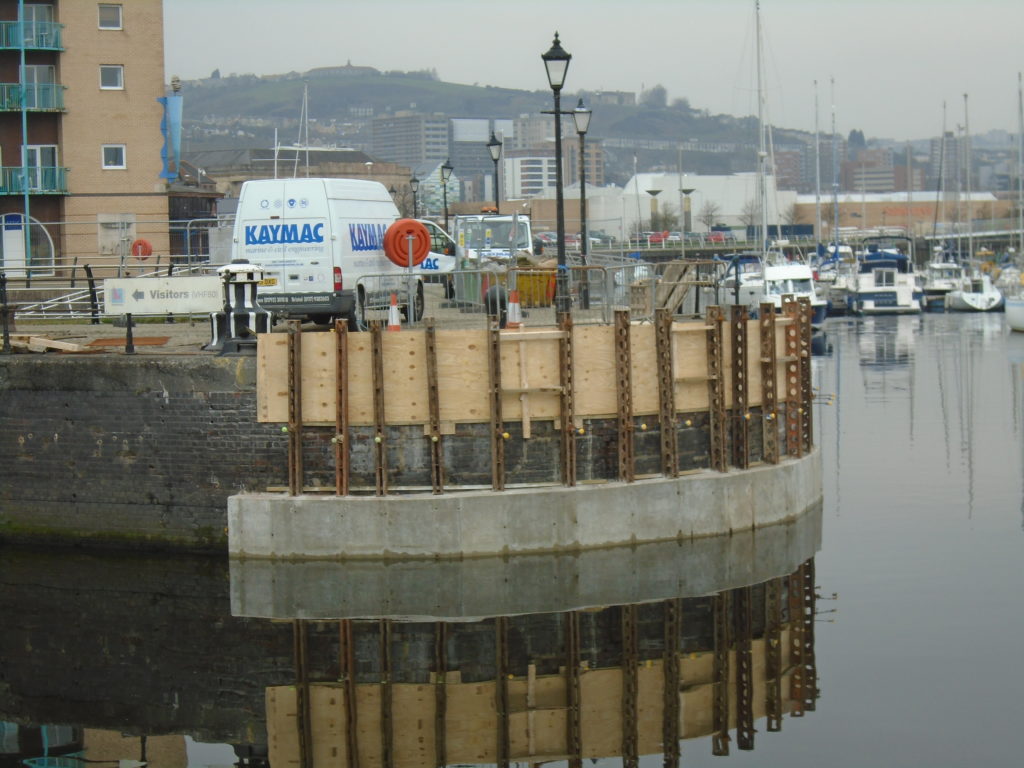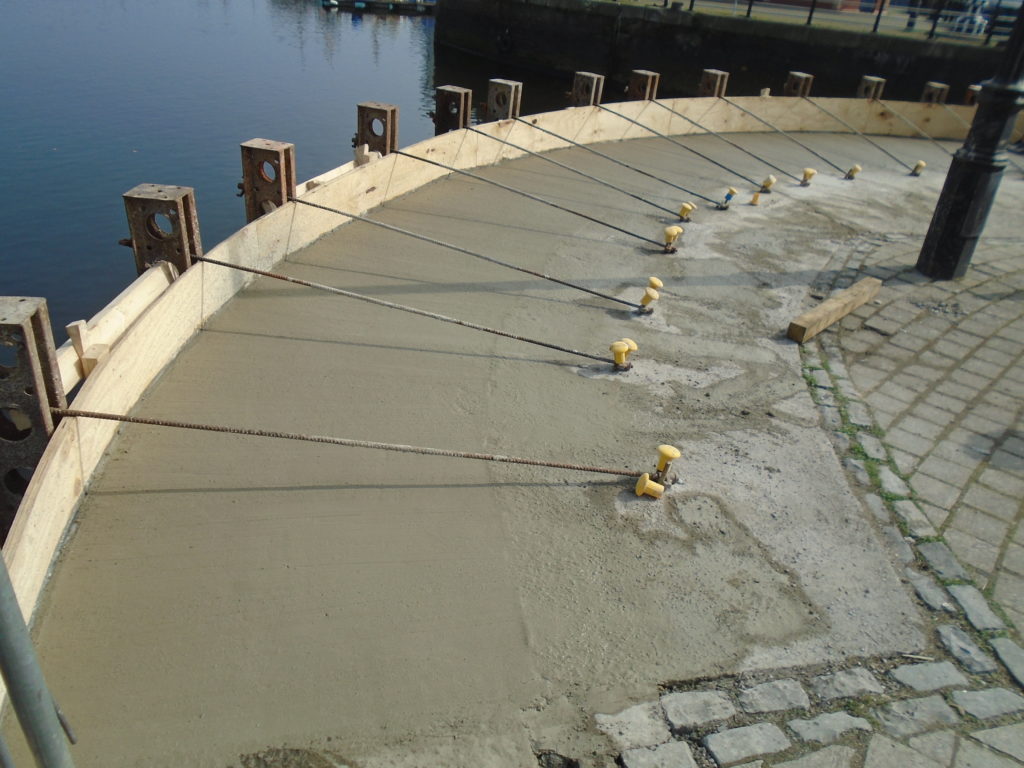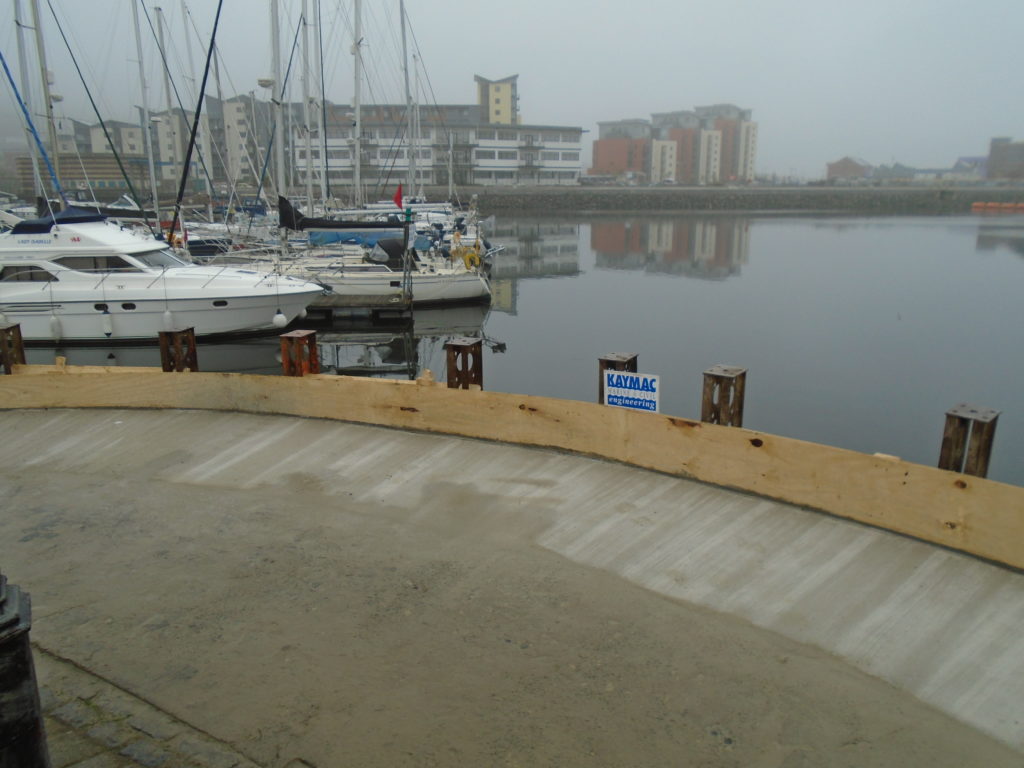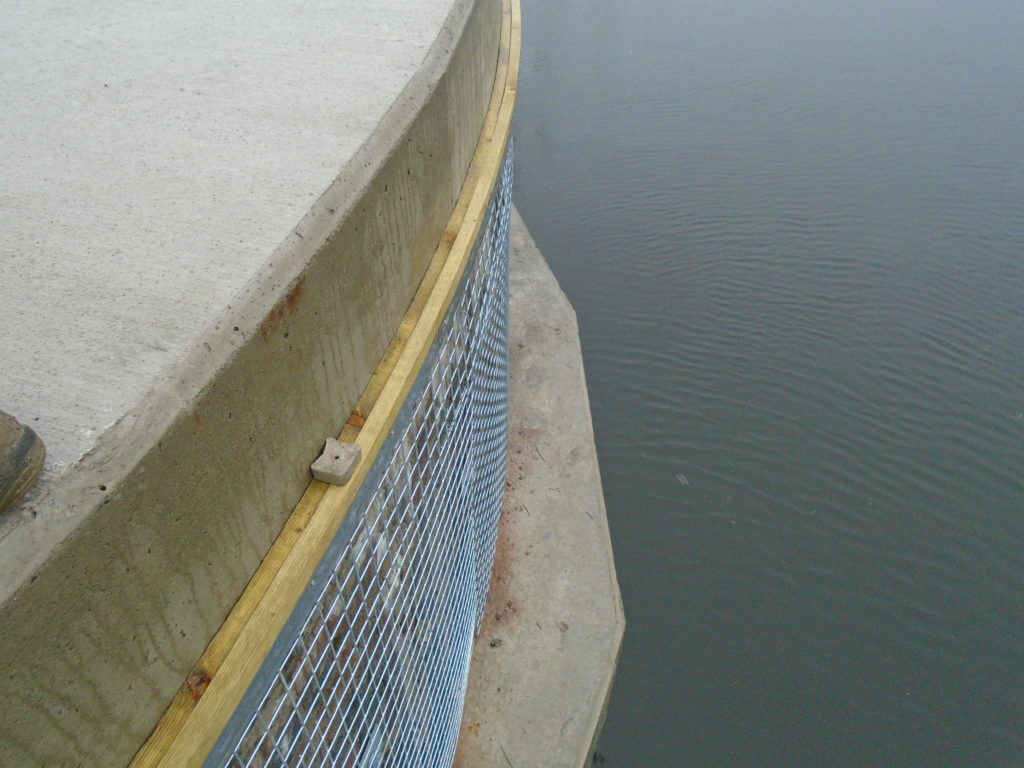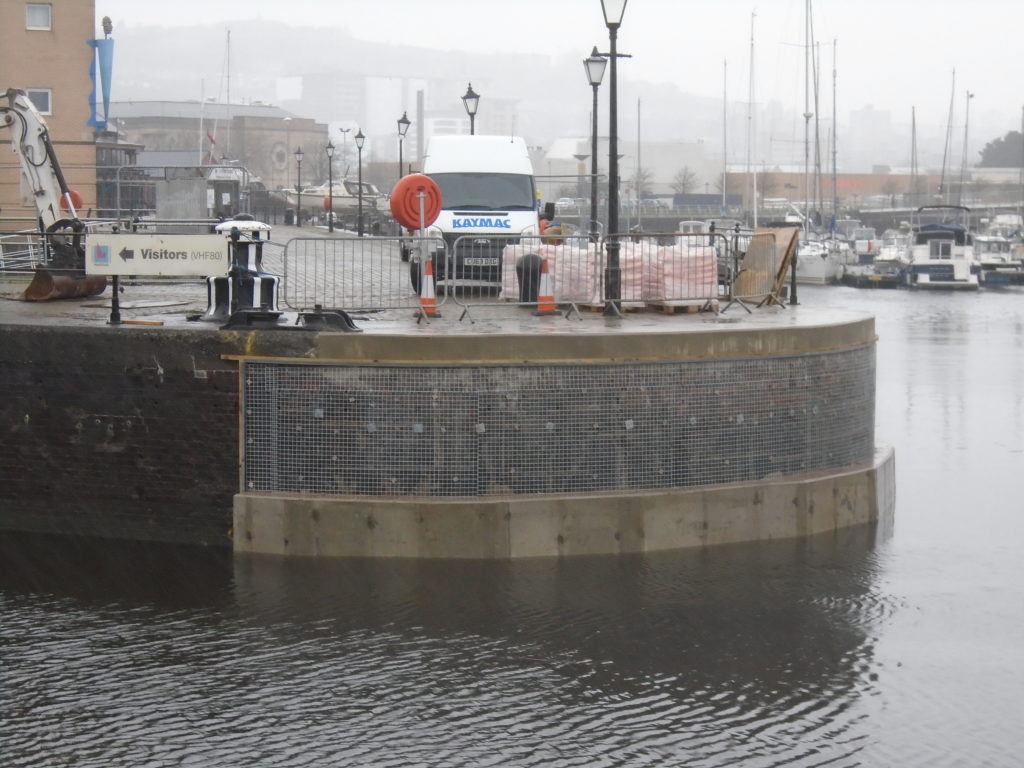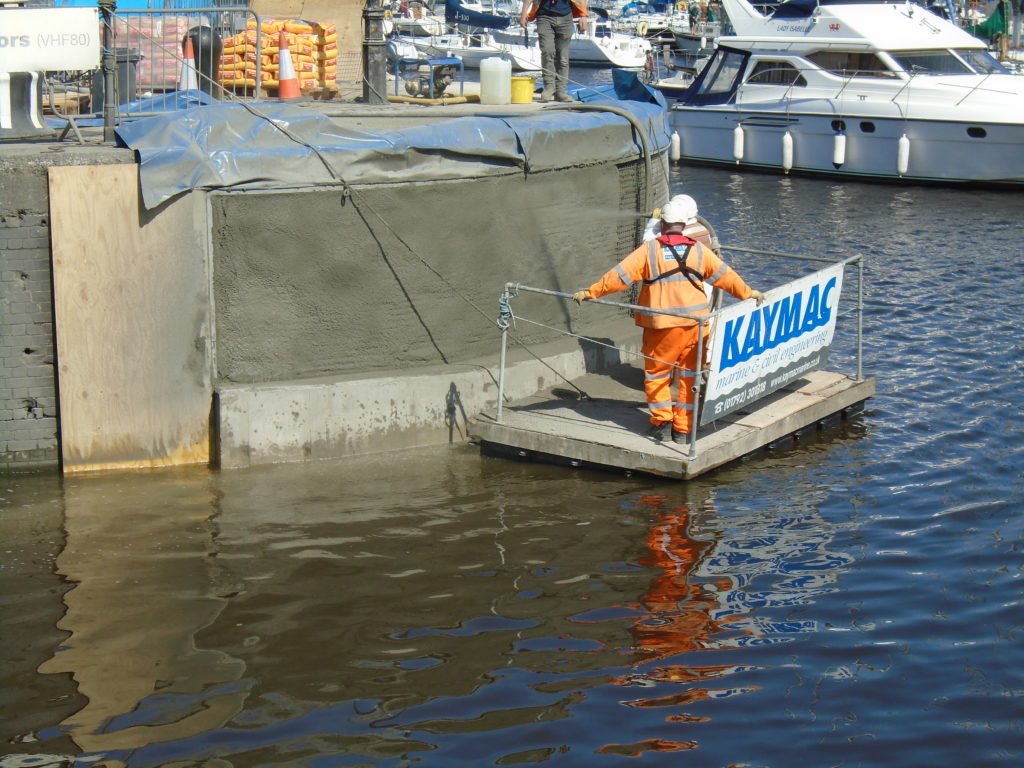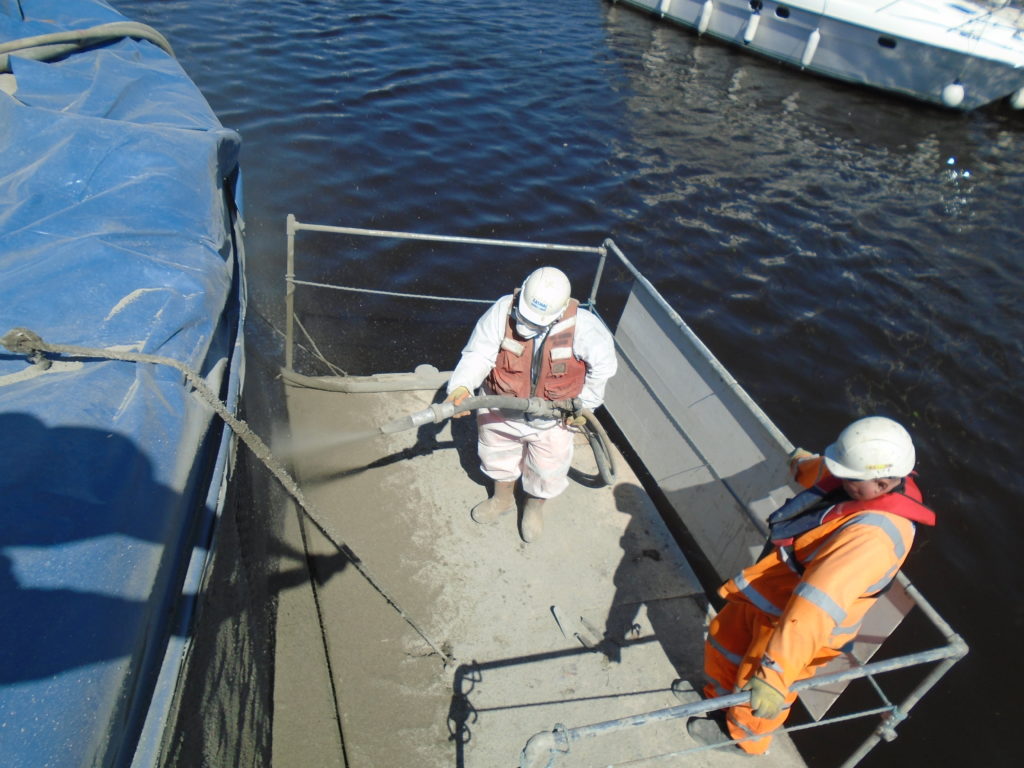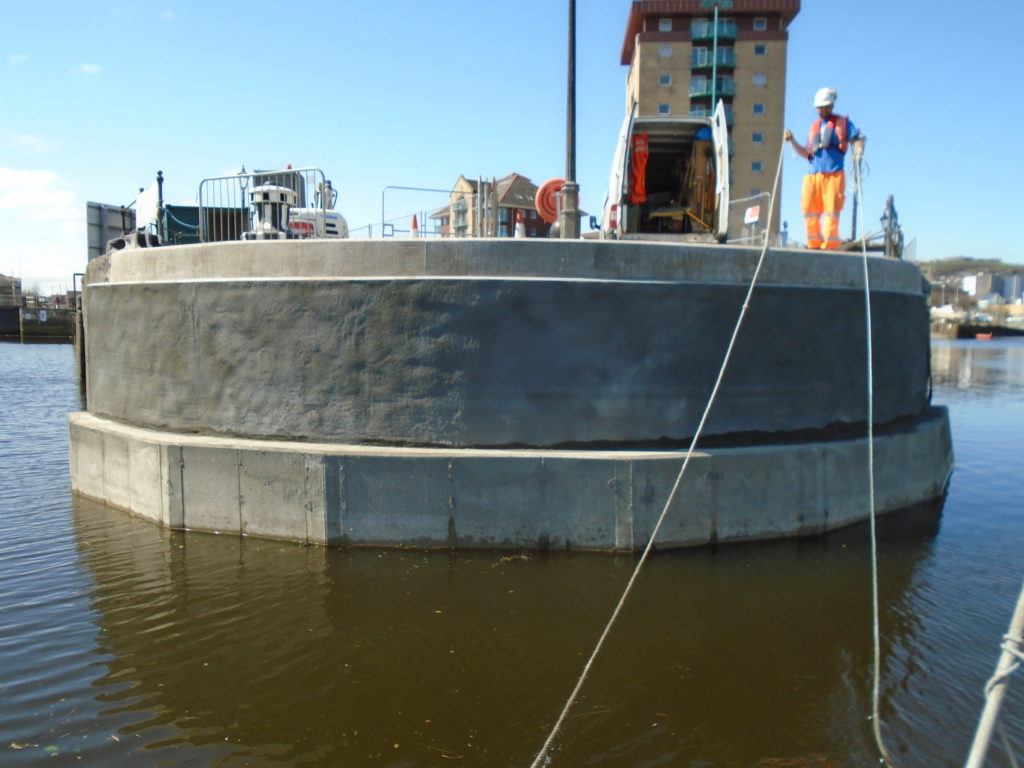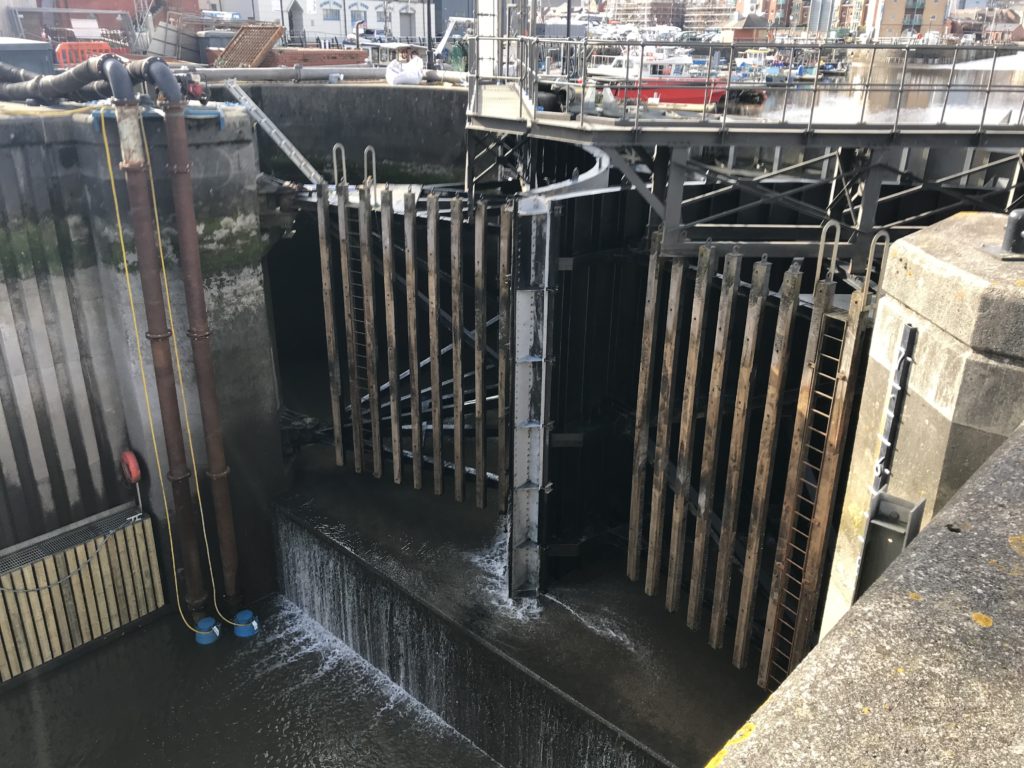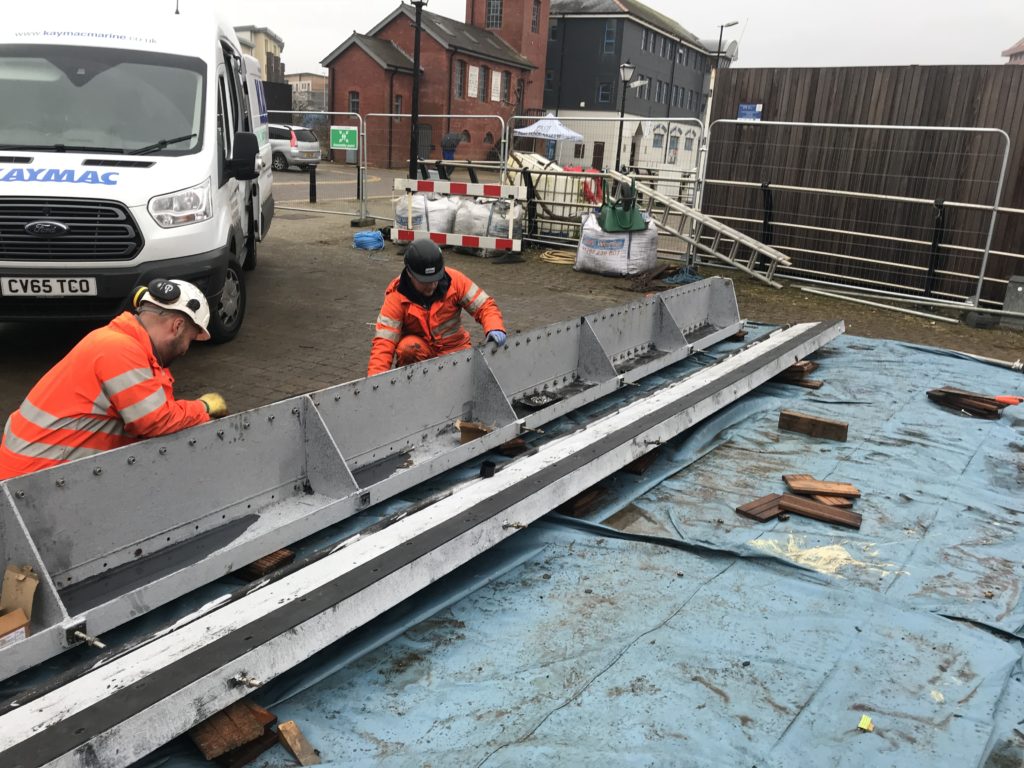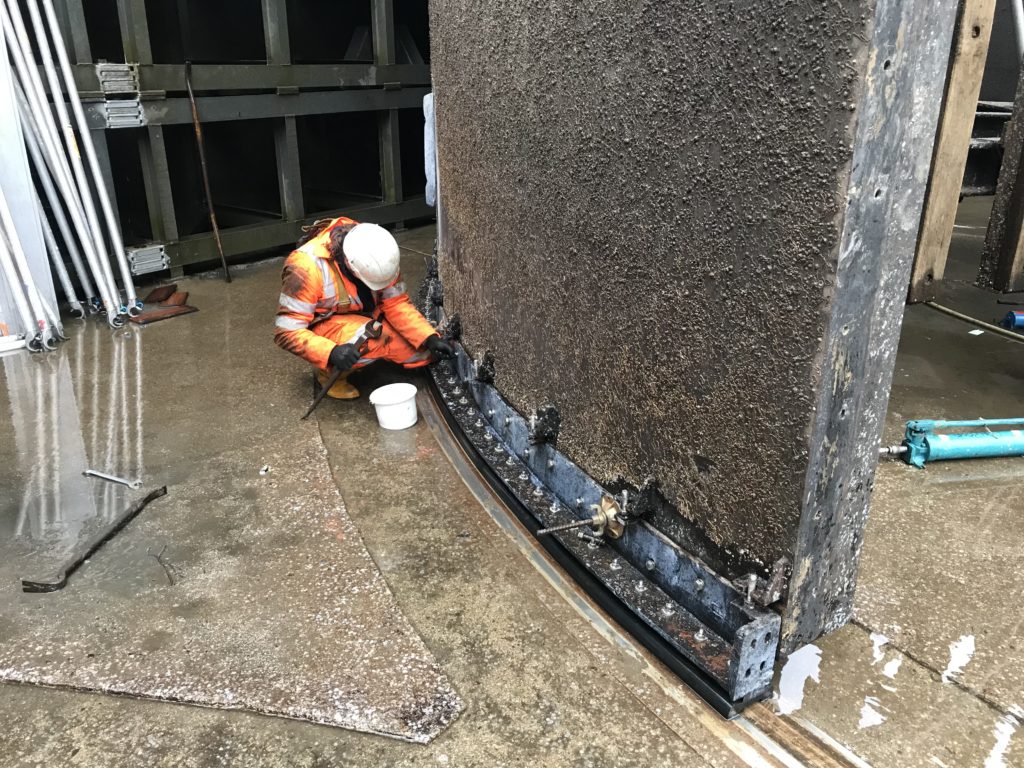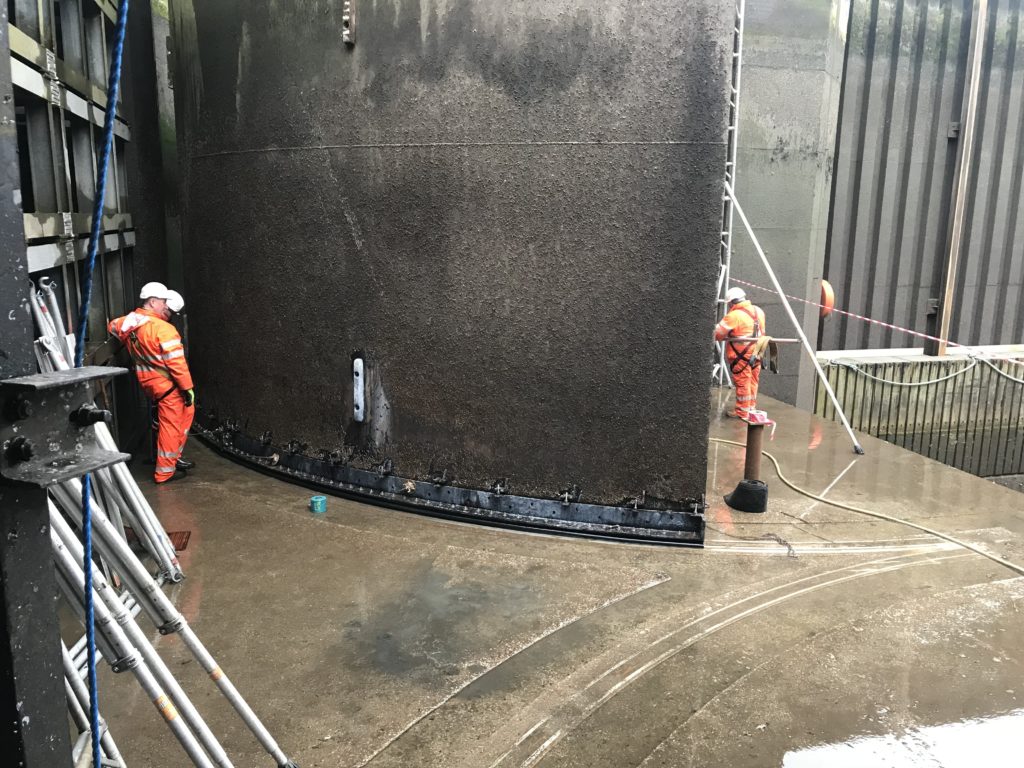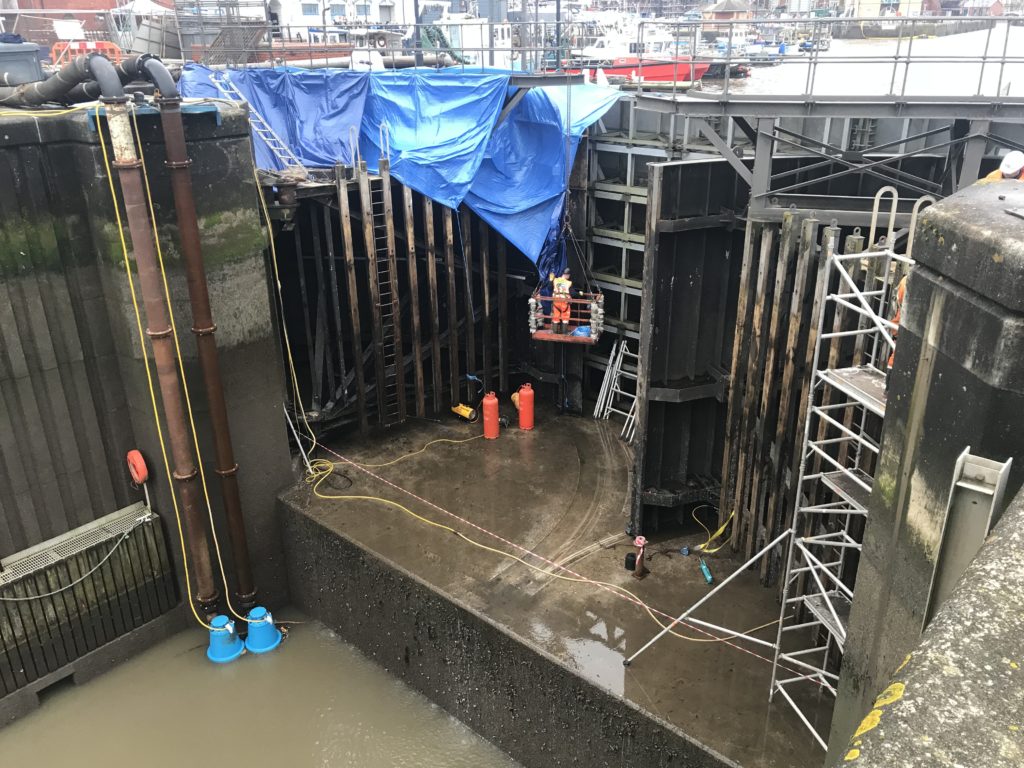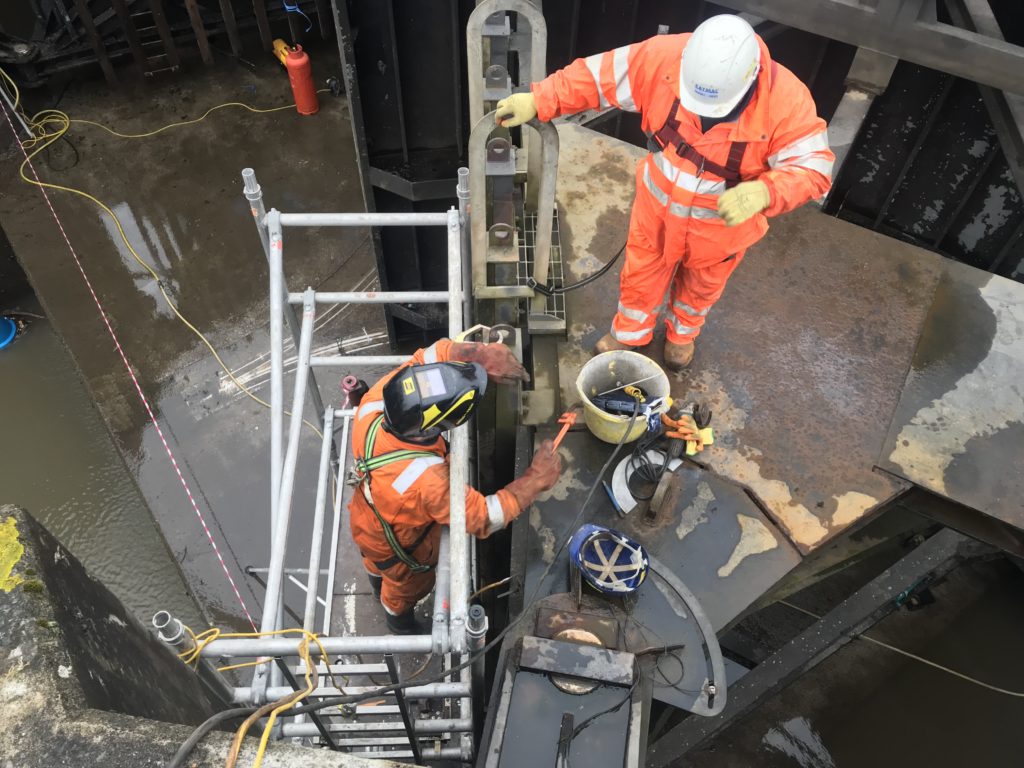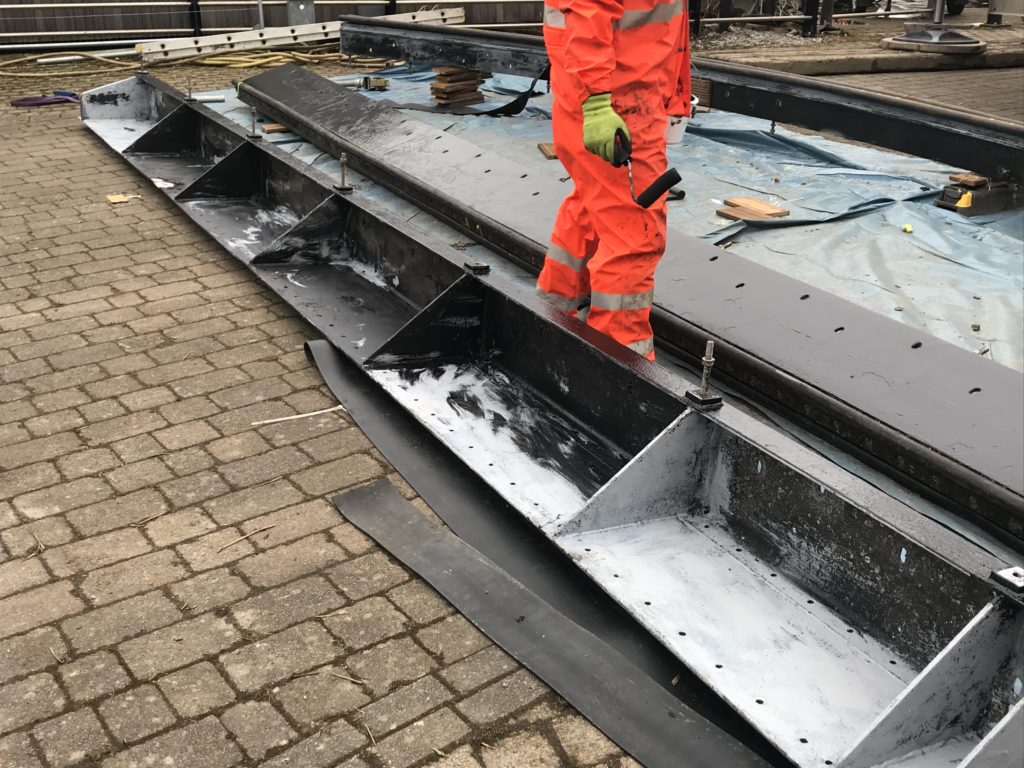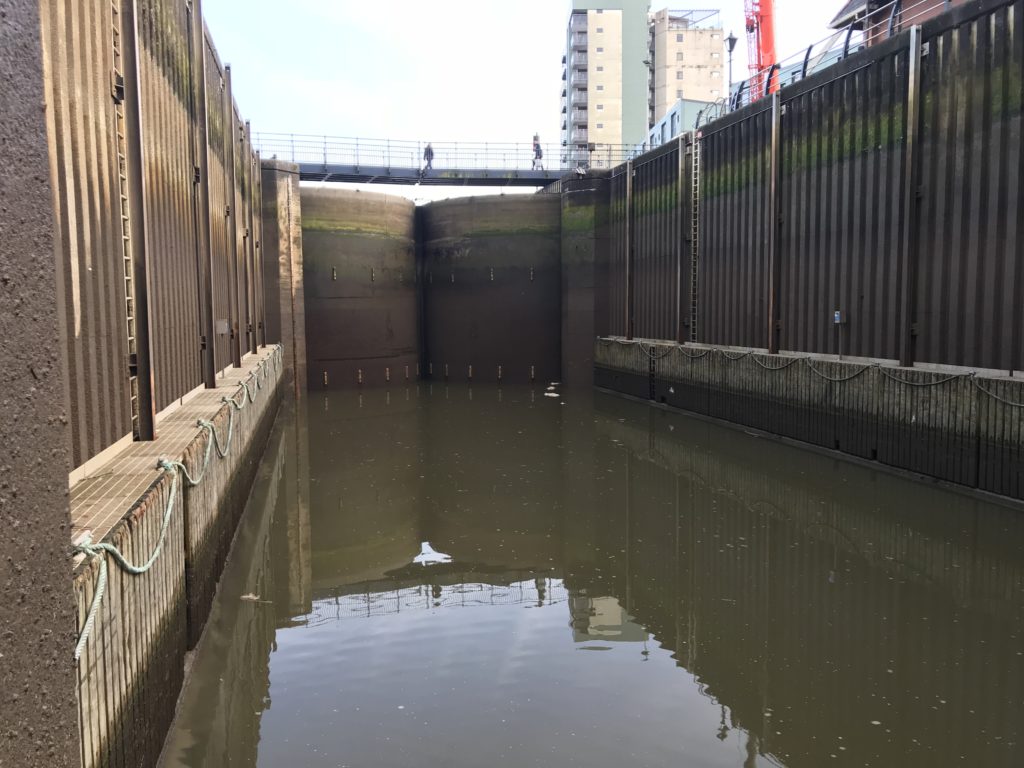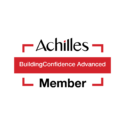Tawe Barrage Lock Gate Maintenance
The Kaymac Swansea Tawe Barrage project deployed a wide range of skill and services in adverse conditions, which were delivered on time and in budget. The project is a clear achievement and shows the depth of marine civil engineering offerings”
The European Commercial Marine Judges
The work contracted to Kaymac comprised of three phases; scour repairs to spalling/deteriorating Quay wall above and below waterline and scour protection installation, refurbishment main Barrage lock gates and installation of new post and rail fencing.
Scour Repair to spalling/deteriorating Quay Wall and scour protection installation above and below the waterline.
In order to achieve scour protection a dive team was required to clear the silt from base of river wall in the affected area to accommodate new concrete apron. Once silt had been cleared and a solid base has been found, mesh reinforcement and formwork was lifted into place with a small crane and secured in place by divers. The new concrete apron was poured in two lifts with a concrete pump using the tremie method and following sufficient curing period, the formwork was removed by divers and lifted out using a small crane. Due to the curve of the quay wall the formwork was a bespoke design and constructed by our in-house fitters at our Swansea workshop and delivered to site prior to installation.
The works above the water line were carried out from small pontoon that could manoeuvre by hand or with a small work/safety boat. Open joints in the quay wall were racked out and repointed, cracks were broken out and steel bars installed and sealed with an approved marine grade mortar and any voids were filled with concrete. The repairs to the wall were finished with spay concrete.
Refurbishment to Barrage lock gates
Kaymac’s repair objectives for the main barrage lock gates were to replace the seals where required, replace the Clevis Cylinder, Cylinder Pins, Gimbal bushes, and Sacrificial Anodes as required, abrade and paint rear skins (internal plates) and spiders (A frames/radial arms) to inner gates, refurbish depth gauge boards, replace vertical timber fenders to lock pontoons and install signs to inner gate buttress. These repairs and installations where highly time sensitive as it was crucial they were carried out in the planned two week shut down period.
Kaymac operatives began this phase by installing the stop Logs between the inner gates and the marina, and closing the penstock intakes in order to refurbish the seals by divers. Once a seal was created operatives then had to install suitably sized submersible pumps to partly empty the Lock barrel and scaffolding access steps and platforms were installed to provide safe access and egress into and out of the lock while inspections and refurbishment works are being carried out.
The gate structure repairs involved removing all seal carriers and recovering to shore, operatives then removed old seals and shot blasted and repaired any deformations or corrosion damage as necessary. The carriers had to be painted after the necessary repairs, then new seals and all seal carriers, new jointing strips and corner blocks were fitted. New sacrificial anodes could then be fitted to the gates to protect the gates against future corrosion; this was carried out by divers on the outer wet side. Once repairs were complete operatives ensured a good electrical contact with mounting studs was achieved.
The removal of marine growth was required from the depth gauge boards, hand abrade and coat with anti-fouling paint was applied to existing colours and remove and replace vertical tantalised fenders to floating pontoons in lock. The new signage could then be erected.
The west and east outer gates required inspections and repairs were found to be damaged. To achieve this, operatives had to remove cylinder pin and retract cylinder to disconnect hydraulic cylinder from gate. The gate clevis sleeves were then checked for signs of movement and wears, and replace where necessary. Installation of new spherical bearing and circlips in cylinder eyes and refurbished hydraulic cylinder onto gimbal could then take place, and then operatives extended the cylinder and re-connected to gate with new cylinder pin. Following acceptance by the Engineer of the dry commissioning, we could remove all access equipment within the lock and remove the stop logs to flood the lock barrel.
